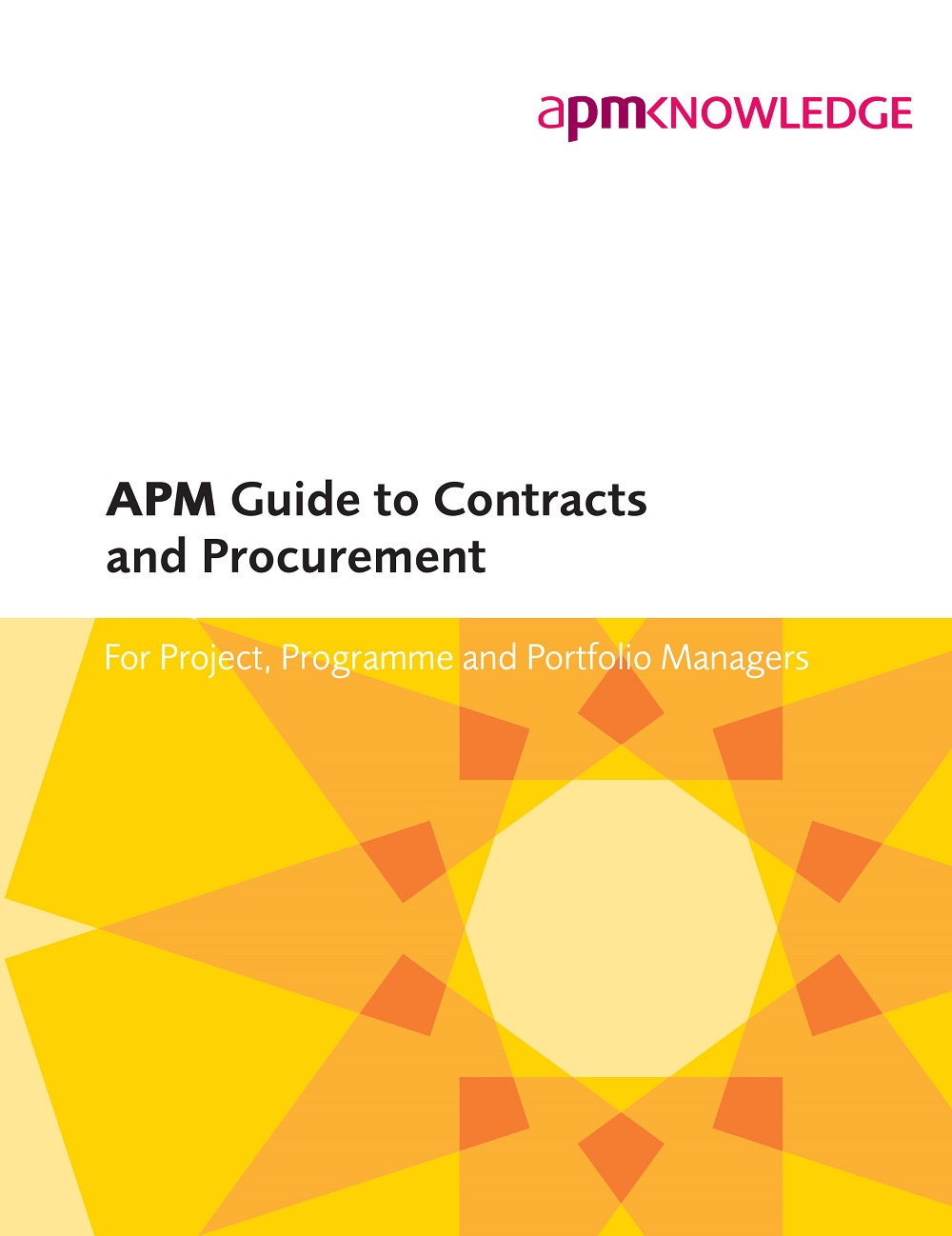Understanding contracts and procurement
John Lake, chair of the APM Contracts and Procurement SIG, talks about the importance of contracts and procurement and how the new APM Guide to Contracts and Procurement, written by the SIG’s volunteers based on their experience, is accessible, easy to navigate, and can help project managers understand some of the challenges.
 The SIG is concerned that there is little training available for project managers on contracts and procurement, which is why the guide was written to help project managers plan how to manage contracts better. This is an important area as many 80-90 percent of project spend can be contracted out to external providers.
The SIG is concerned that there is little training available for project managers on contracts and procurement, which is why the guide was written to help project managers plan how to manage contracts better. This is an important area as many 80-90 percent of project spend can be contracted out to external providers.
Simplistically, procurement is about the cards you deal yourself, the decisions you make about how to contract for the supply of goods and services. Contract management is about managing what you have been dealt with.
Procurement decisions are taken early in the project life cycle and have a big impact on total cost downstream. How risk is allocated and shared with suppliers is a major consideration. Care has to be taken to avoid allocating risk to a supplier that cannot manage the risk and could financially fail. In reality, attempting to transfer risk fully to a supplier, never works, the risk always remains with you, the customer, and you will pay a premium as the supplier will increase the price to try and protect their financial risk.
Another challenged faced by the project manager, is that they are often be brought in after the procurement decisions have been made, simply to deliver the contact stage. This is true of both the customer and suppliers project managers.
The APM Guide to Contracts and Procurement uses a 7-stage model, each of which overlaps:
Concept and Feasibility; Project Procurement Strategy; Package Contracting Strategy; Prepare Contracts Terms and Requirements; Select Provider and Award Contract; Manage and Deliver the Contract; Contact Closure, Handover, Operation and Support.
Each stage is described with stage inputs, outputs and risks. If you are dropped in at the delivery stage it is advisable that you familiarise yourself with how it got there and what the next steps are.
For the contract delivery stage, you should check both your own and the suppliers understanding of acceptance of deliverables, conditions of contract, requirements, technical issues and pricing. As project manager you need to know and review the contract, you need to own it.
In managing delivery, make your own assessment, don’t just believe what you are told by the supplier.
The guide identifies 19 typical risks, what they are and how they can be managed. It is all about the people and relationships. You need to understand each other’s pressures and concerns, and especially for overseas suppliers, any cultural and communication challenges. What can go wrong? Uncontrolled or unspecified dependencies, on you, on your supplier, or between suppliers, is one of the highest issues. Resource issues, including both numbers and quality of staff – both your own team and the suppliers. Requirement changes / poor change management. Undefined acceptance criteria.
Change should not be avoided, but it does need resources to be allocated to manage it effectively, and that costs both the customer and supplier. The process must be agreed upfront. Changes at early stages are less costly than later.
One of the latest challenges which the Contracts and Procurement SIG has been debating, is that of how you contract for agile project management. Agile is a way of thinking that it somewhat different from the conventional waterfall approach and contracting methods.
The standard waterfall and contracting approaches assume there is a good idea of the requirement and how to deliver it. But of course, things change, and often the requirement is not that well understood at the beginning of a project. An agile project management approach can help reduce risk by breaking up work packages into manageable stages.
The agile approach requires commitment to collaboration between the client and supplier and involvement across the whole team, particularly the client’s team. If this cannot happen (e.g. users are not available) then an agile method will not deliver its benefits. Product managers and senior users are essential roles. Both the client and supply have to fully commit to agile and the way of thinking it requires.
The contract approach used must set the collaborative structures and ways of working in place. Current research suggests a capped or rolling Time & Materials, (T&M), basis under a framework or main body Contract (T&M provides cost burn visibility). Main body should define contract background terms such as: parties to the contract, IP ownership, security, jurisdiction and T&M rates. An Annexe Statement of Work, (SoW), should detail thoroughly the ways of working for the agile method selected.
In summary - to be successful, agile needs the correct culture for both client and supplier, it requires a truly collaborative mind set.
By Martin Gosden
SWWE Branch Chairman

0 comments
Log in to post a comment, or create an account if you don't have one already.